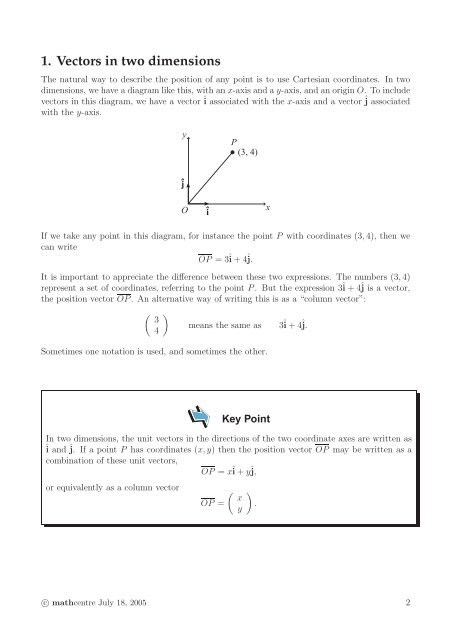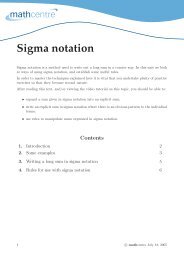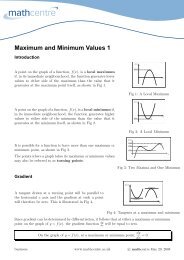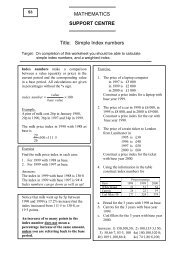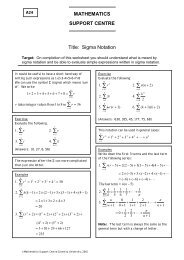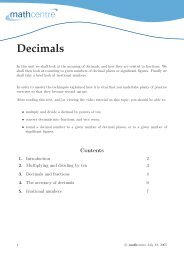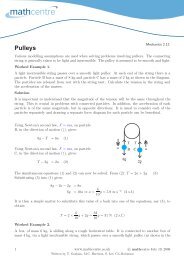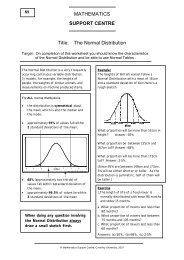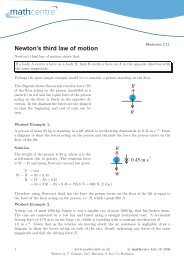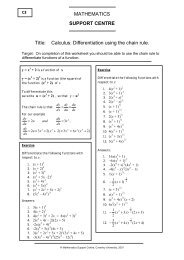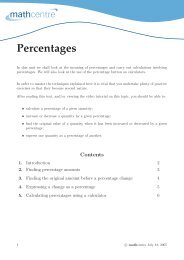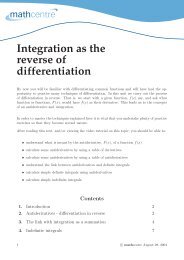Cartesian components of vectors
Cartesian components of vectors
Cartesian components of vectors
You also want an ePaper? Increase the reach of your titles
YUMPU automatically turns print PDFs into web optimized ePapers that Google loves.
1. Vectors in two dimensions<br />
The natural way to describe the position <strong>of</strong> any point is to use <strong>Cartesian</strong> coordinates. In two<br />
dimensions, we have a diagram like this, with an x-axis and a y-axis, and an origin O. To include<br />
<strong>vectors</strong> in this diagram, we have a vector î associated with the x-axis and a vector ĵ associated<br />
with the y-axis.<br />
y<br />
P<br />
(3, 4)<br />
j<br />
O<br />
i<br />
x<br />
If we take any point in this diagram, for instance the point P with coordinates (3, 4), then we<br />
can write<br />
OP = 3î + 4ĵ.<br />
It is important to appreciate the difference between these two expressions. The numbers (3, 4)<br />
represent a set <strong>of</strong> coordinates, referring to the point P. But the expression 3î + 4ĵ is a vector,<br />
the position vector OP. An alternative way <strong>of</strong> writing this is as a “column vector”:<br />
(<br />
3<br />
4<br />
)<br />
means the same as 3î + 4ĵ.<br />
Sometimes one notation is used, and sometimes the other.<br />
Key Point<br />
In two dimensions, the unit <strong>vectors</strong> in the directions <strong>of</strong> the two coordinate axes are written as<br />
î and ĵ. If a point P has coordinates (x, y) then the position vector OP may be written as a<br />
combination <strong>of</strong> these unit <strong>vectors</strong>,<br />
OP = xî + yĵ,<br />
or equivalently as a column vector<br />
( x<br />
OP =<br />
y<br />
)<br />
.<br />
c○ mathcentre July 18, 2005 2


